
John Singer Sargent Painting Reproductions 4 of 12
1856-1925
American Impressionist Painter
272 Sargent Paintings

Palazzo Labia and San Geremia, Venice 1913
Oil Painting
$980
$980
SKU: SAR-1774
John Singer Sargent
Original Size: unknown
Private Collection
John Singer Sargent
Original Size: unknown
Private Collection

Girl Fishing 1913
Oil Painting
$965
$965
SKU: SAR-1775
John Singer Sargent
Original Size: unknown
Private Collection
John Singer Sargent
Original Size: unknown
Private Collection
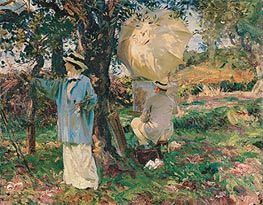
The Sketchers 1914
Oil Painting
$1077
$1077
Canvas Print
$73.02
$73.02
SKU: SAR-1776
John Singer Sargent
Original Size: 55.9 x 71.1 cm
Virginia Museum of Fine Arts, Richmond, USA
John Singer Sargent
Original Size: 55.9 x 71.1 cm
Virginia Museum of Fine Arts, Richmond, USA

The Artist Sketching 1922
Oil Painting
$1058
$1058
SKU: SAR-1777
John Singer Sargent
Original Size: unknown
Private Collection
John Singer Sargent
Original Size: unknown
Private Collection

Life Study (Study of an Egyptian Girl) 1891
Oil Painting
$1355
$1355
Canvas Print
$61.76
$61.76
SKU: SAR-1778
John Singer Sargent
Original Size: 190.5 x 61 cm
Art Institute of Chicago, Illinois, USA
John Singer Sargent
Original Size: 190.5 x 61 cm
Art Institute of Chicago, Illinois, USA
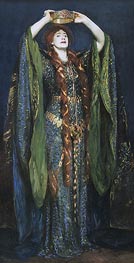
Miss Ellen Terry as Lady Macbeth 1889
Oil Painting
$1284
$1284
Canvas Print
$61.76
$61.76
SKU: SAR-1779
John Singer Sargent
Original Size: 221 x 114.3 cm
Tate Gallery, London, UK
John Singer Sargent
Original Size: 221 x 114.3 cm
Tate Gallery, London, UK

Elizabeth Winthrop Chanler (Mrs John Jay Chapman) 1893
Oil Painting
$1221
$1221
Canvas Print
$76.25
$76.25
SKU: SAR-1780
John Singer Sargent
Original Size: 125.4 x 102.8 cm
Smithsonian American Art Museum, Washington, USA
John Singer Sargent
Original Size: 125.4 x 102.8 cm
Smithsonian American Art Museum, Washington, USA
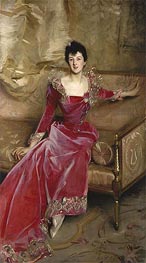
Mrs. Hugh Hammersley 1892
Oil Painting
$1235
$1235
Canvas Print
$86.57
$86.57
SKU: SAR-1781
John Singer Sargent
Original Size: 205.7 x 115.6 cm
Metropolitan Museum of Art, New York, USA
John Singer Sargent
Original Size: 205.7 x 115.6 cm
Metropolitan Museum of Art, New York, USA
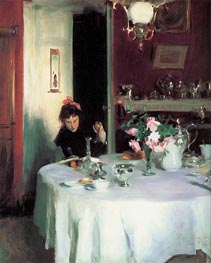
The Breakfast Table 1884
Oil Painting
$758
$758
Canvas Print
$75.20
$75.20
SKU: SAR-1782
John Singer Sargent
Original Size: 54 x 45 cm
Fogg Art Museum at Harvard University, Massachusetts, USA
John Singer Sargent
Original Size: 54 x 45 cm
Fogg Art Museum at Harvard University, Massachusetts, USA
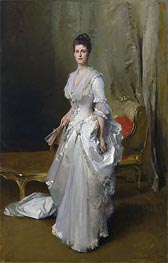
Mrs. Henry White 1883
Oil Painting
$1432
$1432
Canvas Print
$61.76
$61.76
SKU: SAR-1783
John Singer Sargent
Original Size: 225 x 143.5 cm
Corcoran Gallery of Art, Washington, USA
John Singer Sargent
Original Size: 225 x 143.5 cm
Corcoran Gallery of Art, Washington, USA

Street in Venice c.1880/82
Oil Painting
$975
$975
Canvas Print
$69.10
$69.10
SKU: SAR-1784
John Singer Sargent
Original Size: 75 x 52.4 cm
The Clark Art Institute, Massachusetts, USA
John Singer Sargent
Original Size: 75 x 52.4 cm
The Clark Art Institute, Massachusetts, USA
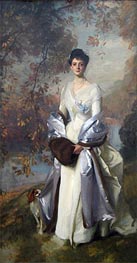
Portrait of Pauline Astor c.1898
Oil Painting
$2011
$2011
SKU: SAR-7964
John Singer Sargent
Original Size: unknown
Private Collection
John Singer Sargent
Original Size: unknown
Private Collection
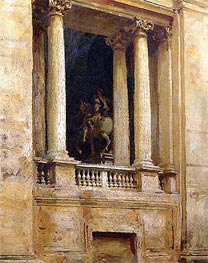
A Window in the Vatican 1906
Oil Painting
$750
$750
SKU: SAR-11670
John Singer Sargent
Original Size: 71 x 56 cm
Private Collection
John Singer Sargent
Original Size: 71 x 56 cm
Private Collection
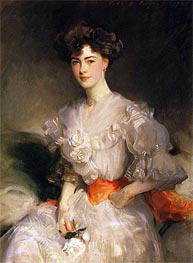
Maud Glen Coats, Duchess of Wellington 1906
Oil Painting
$1185
$1185
SKU: SAR-13380
John Singer Sargent
Original Size: 106.8 x 78.8 cm
Private Collection
John Singer Sargent
Original Size: 106.8 x 78.8 cm
Private Collection

Egyptians Raising Water from the Nile c.1890/91
Oil Painting
$663
$663
Canvas Print
$77.79
$77.79
SKU: SAR-15164
John Singer Sargent
Original Size: 63.5 x 53.3 cm
Metropolitan Museum of Art, New York, USA
John Singer Sargent
Original Size: 63.5 x 53.3 cm
Metropolitan Museum of Art, New York, USA
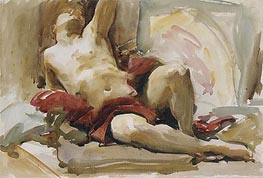
Man with Red Drapery a.1900
Paper Art Print
$58.49
$58.49
SKU: SAR-15165
John Singer Sargent
Original Size: 36.5 x 53.7 cm
Metropolitan Museum of Art, New York, USA
John Singer Sargent
Original Size: 36.5 x 53.7 cm
Metropolitan Museum of Art, New York, USA
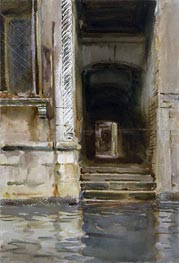
Venetian Passageway c.1905
Paper Art Print
$58.49
$58.49
SKU: SAR-15166
John Singer Sargent
Original Size: 53.8 x 36.8 cm
Metropolitan Museum of Art, New York, USA
John Singer Sargent
Original Size: 53.8 x 36.8 cm
Metropolitan Museum of Art, New York, USA
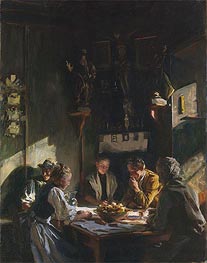
Tyrolese Interior 1915
Oil Painting
$938
$938
Canvas Print
$73.53
$73.53
SKU: SAR-15167
John Singer Sargent
Original Size: 71.4 x 56 cm
Metropolitan Museum of Art, New York, USA
John Singer Sargent
Original Size: 71.4 x 56 cm
Metropolitan Museum of Art, New York, USA
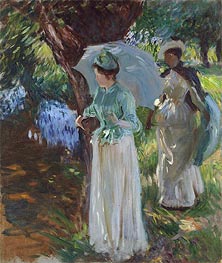
Two Girls with Parasols 1888
Oil Painting
$797
$797
Canvas Print
$78.81
$78.81
SKU: SAR-15168
John Singer Sargent
Original Size: 74.9 x 63.5 cm
Metropolitan Museum of Art, New York, USA
John Singer Sargent
Original Size: 74.9 x 63.5 cm
Metropolitan Museum of Art, New York, USA
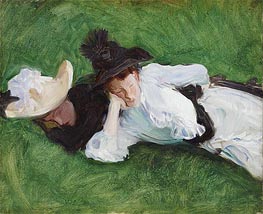
Two Girls on a Lawn c.1889
Oil Painting
$669
$669
Canvas Print
$76.25
$76.25
SKU: SAR-15169
John Singer Sargent
Original Size: 53.7 x 64 cm
Metropolitan Museum of Art, New York, USA
John Singer Sargent
Original Size: 53.7 x 64 cm
Metropolitan Museum of Art, New York, USA
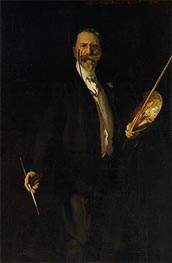
Portrait of William Merritt Chase 1902
Oil Painting
$1016
$1016
Canvas Print
$61.76
$61.76
SKU: SAR-15170
John Singer Sargent
Original Size: 158.8 x 105 cm
Metropolitan Museum of Art, New York, USA
John Singer Sargent
Original Size: 158.8 x 105 cm
Metropolitan Museum of Art, New York, USA
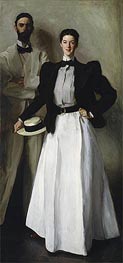
Mr. and Mrs. I. N. Phelps Stokes 1897
Oil Painting
$1301
$1301
Canvas Print
$72.51
$72.51
SKU: SAR-15171
John Singer Sargent
Original Size: 214 x 101 cm
Metropolitan Museum of Art, New York, USA
John Singer Sargent
Original Size: 214 x 101 cm
Metropolitan Museum of Art, New York, USA
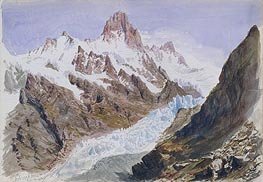
Schreckhorn, Eismeer (Splendid Mountain) 1870
Paper Art Print
$58.49
$58.49
SKU: SAR-15172
John Singer Sargent
Original Size: 27.6 x 40.6 cm
Metropolitan Museum of Art, New York, USA
John Singer Sargent
Original Size: 27.6 x 40.6 cm
Metropolitan Museum of Art, New York, USA
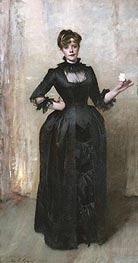
Lady with the Rose (Charlotte Louise Burckhardt) 1882
Oil Painting
$1264
$1264
Canvas Print
$81.74
$81.74
SKU: SAR-15173
John Singer Sargent
Original Size: 213.4 x 113.7 cm
Metropolitan Museum of Art, New York, USA
John Singer Sargent
Original Size: 213.4 x 113.7 cm
Metropolitan Museum of Art, New York, USA